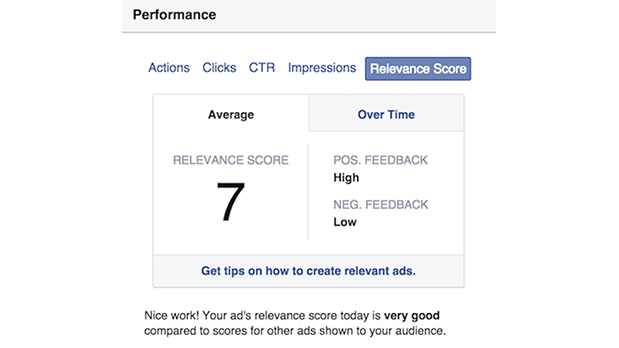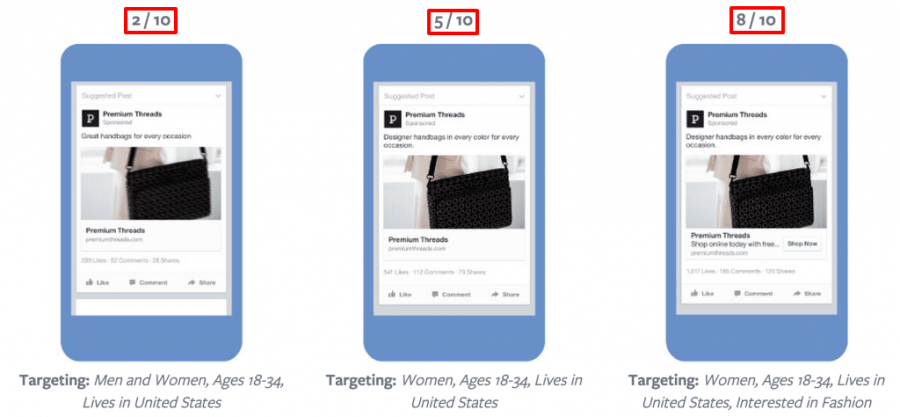Strategy
Product
What You Need To Know About Facebook Ads Relevance Score
Mar 19, 2019
Product
Mar 19, 2019
There’s been some confusion surrounding Facebook Ads Relevance Scores as not everyone is aware of what they exactly mean and how these scores can impact the success of your ads. And for those who are aware of what it is, you may be interested in checking out some tips on what you can do to improve that score! Don’t miss out and learn everything you need to know about Facebook Ads’ Relevance Score here!
Back in 2015, Facebook decided to introduce a new feature that would help advertisers understand how well their ads were performing when presented to their target audience. The metric itself is quite simple to understand as the rating is measured based on a scoring system that ranges from 1 to 10.
If your Relevancy Score is 1, it is highly likely that your ad is not performing the way it should be to your audience. On the other hand, if you have a score near the 8, 9 or 10 mark, it means that your ad has proven to be highly relevant amongst your audience, increasing the likelihood of a strong ad performance.
Here’s what a good Relevance Score looks like:

A relevance score is calculated based on the positive and negative feedback that Facebook expects an ad will receive from the advertiser’s chosen target audience. If Facebook expects your ad to receive positive engagement and interactions, it will give your ad a higher relevance score, whereas a lower performance prediction will result in a lower score. If Facebook expects people to hide or report an ad, it will receive a lower score too.
It is, however, important to note that ads with guaranteed delivery, such as those with reach and frequency objectives, will not be impacted by relevance scores at all. Relevance scores have a much smaller impact on both cost and delivery when it comes to brand awareness campaigns, considering that ads are specifically optimised for reaching people, rather than driving them to complete a conversion.
In order to check your ad’s relevance score on The Next Ad, add a column in the Column Manager in the Campaigns Overview section and click on Relevance Score. You will then see that a new column has been added.
Note: Relevance score will not appear at the Campaign or Ad Set level. This column can only be viewed on Ad level.
An all too common mistake is that many advertisers have misinterpreted these scores and what they actually tell you about your ad. These scores are there to give Facebook advertisers an idea about whether or not their ad will be considered relevant to their customers. They are NOT meant to review the quality of your ad.
Therefore, if your ad receives a low Relevance Score, it won’t be because your ad copy isn’t good enough or that the image or video you used isn’t performing well. It’s all about relevance. How relevant is it to your target audience? Is the demographic target you’ve selected appropriate for the ad you are publishing? Are they likely to interact with it? Is there a strong chance of them converting, downloading, clicking and/or watching your ad?
Check out this example that Facebook used to illustrate the difference between an ad with a strong relevance score and one with a poor one:

Even the best artistically designed, ad created by Picasso himself, would struggle to perform well if the selected target audience isn’t relevant enough, so make sure that you have chosen the correct audience before proceeding with your ad!
However, please bear in mind that the relevance score is just an extra data point and should not be your primary metric. You should always focus on what your core advertising objectives are (e.g. App Installs, Conversions).
Relevance scores can help advertisers in several ways. Here are three key benefits that it offers:
Reduce the cost of reaching people: In short, the higher your ad’s relevance score is, the less it will cost you to deliver it to your audiences. That’s due to the fact that Facebook’s ad delivery system is designed to show the right and appropriate content to the relevant audience, with a high relevance score being noted by the system and resulting in a positive signal.
Can help advertisers test ad creative options before running campaign: It also allows advertisers to try out different combinations of copy and image across different audiences, enabling you to gain a better understanding of which combinations result in the highest relevance scores.
Optimise campaigns that are already in progress: During the period that an ad campaign is being run, advertisers can take the time to monitor their relevance scores. If you notice a dip in your score, it may be an indicator that the ad’s audience needs to be adjusted or refreshed.